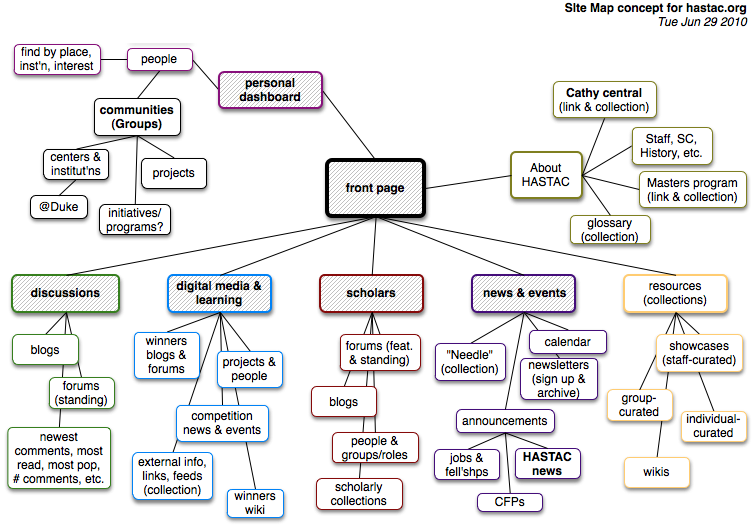 This week I have been in geek heaven. Along with the rest of the Duke-based HASTAC staff, I have been testing the alpha version of our new site, and we’re thrilled with how it’s coming along. We expect the new site to launch by early July.
This week I have been in geek heaven. Along with the rest of the Duke-based HASTAC staff, I have been testing the alpha version of our new site, and we’re thrilled with how it’s coming along. We expect the new site to launch by early July.
We have been working to improve and then replace this web site almost since I started working at HASTAC two years ago. Late last year, we put out the call for developers to help up build a new site, and we hired a wonderful group called Message Agency who were ready to engage this formidable task.
The new site will be built on Drupal, just as this current one is, but it utilizes the community architecture of Drupal Commons, which I like to describe as a bit like an open source Ning on steroids. I hope to be writing a lot more about the new site in the next few months, but right now I’ll tell you about two of the biggest improvements:
The site will be organized around groups which can be created by any HASTAC member as wella s official groups for HASTAC programs such as the Digital Media and Learning Competition and HASTAC Scholars. Groups allow people to self-organize to share information and collaborate on a variety of different types on content, including wiki pages.
The new HASTAC.org will also have site-wide categories so that you can search our vast archive of content by your own interests and research areas. I’m still concerned about how we will get our approximately 5,000 nodes (units of content in Drupal) into the proper categories, but we will be working with our developer to figure this out as part of the migration process.
Cross posted at http://www.hastac.org/blogs/ruby-sinreich/hastac-40-taking-shape
